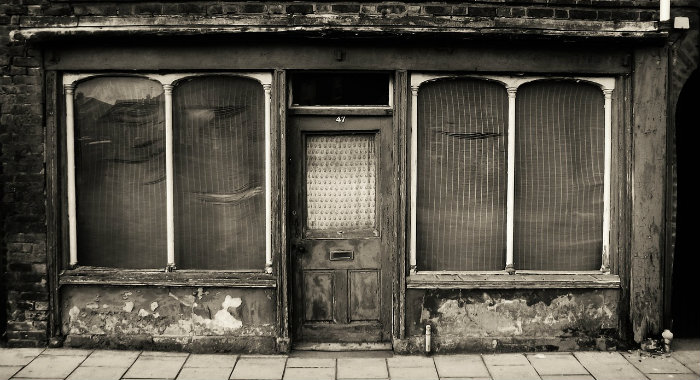Investing in the property market is a tricky business at the best of times.
But with Brexit around the corner and the UK economy now into its ninth year of expansion, things are even more delicate.
What’s going on right now in the property market is particularly interesting. Prices of properties, relative to people’s incomes, are close to the record highs that we saw before the financial crisis.
But unlike back then, mortgages are far more affordable, at least according to data from the Halifax.
Because of this, property investment remains big business, despite some of the naysaying that we heard in the years after the Great Recession.
The recent tax changes announced in 2018 haven’t helped matters for property investors. Buy-to-let investors can no longer offset mortgage repayments against their income, reducing the profitability of the activity.
No single property investment strategy is right for every person: we all have different risk attitudes, goals, investment horizons and tastes. And so what you ultimately decide to do depends on a host of personal factors.
With that said, the UK property market is particularly amenable to a bunch of exciting investment strategies which you may not have considered. Here are a few of the best strategies around:
1) Diversify Your Property Portfolio
New investors often make the mistake of focusing on a single type of property to include in their portfolio.
But the property market is divided up into many submarkets, each of which can go up or down, depending on overall market conditions. New property investors should avoid putting all their eggs in one basket and spread risk more evenly across different investment types that are less correlated with each other.
Diversifying your portfolio will help you to avoid the worst of a market downturn within a particular investment class or geographical location.
2) Investigate Commercial To Residential Conversions

With the rise of internet shopping and offshore production, many commercial properties in the UK are lying vacant.
The good news, though, is that it is opening up opportunities for investors. People want to live in city locations that provide easy access to work and amenities, and so, former commercial properties often provide excellent opportunities for conversion.
You’ll have to work with a seasoned developer to see a good return on your investment, but once you’ve navigated all the planning and tax issues, commercial to residential conversions can be highly desirable and profitable.
3) HMOs
HMOs, or housing with multiple occupants, is perhaps one of the best ways to make a high return on a property, especially in a city.
Usually, an HMO is a larger property that has been subdivided into different living areas, where each tenant pays for the privilege renting a room and sharing facilities – such as the kitchen and bathroom – with other tenants.
The main benefit of this type of investment is that it produces a much higher return than, say, renting out the entire house by itself.
Whereas you might be able to charge a family £800 a month for a home, renting out four bedrooms at £300 a month could net you £1,200, or an extra 50 percent income.
There are some downsides, however, to HMO investing – including increased administrative costs of processing higher tenant turnover, and additional wear and tear – but more often than not, these extras don’t outweigh the increase in income.
HMOs also tend to be a little more time-consuming to manage, just because tenant arrangements tend to be more complicated. But if you can develop a lost-cost system for processing turnover, it’s usually worth it.
4) Rent Out To The Student Market
The student market is, in effect, a type of HMO investment. However, it comes with some advantages than regular HMO investments do not.
For one, income is more certain: students pay the rent from their student loans (you can check that they have these), and the yearly turnover of students means that you always know when old students are leaving and new are arriving.
Strange as it may sound, renting out to students is usually lower risk than renting out to professionals, and they don’t expect as much from their accommodation. There’s no need to provide the latest kitchen accessories or appliances to entice them to use your property.
However, be careful where you invest. You may find that you’re not able to make a good return in cities where the universities provide enough on-site accommodation at affordable or subsidised prices, so check before you buy.
5) Make Extraordinary Returns With Holiday Homes

Holiday lets are among the most profitable types of property investment strategy in the UK, providing high potential returns. But the key word here is “potential” – not all holiday lets make money.
The trick to making money from a holiday let is to keep occupancy high. Holidaymakers are usually willing to pay fantastically high rents for short stays compared to how much you could charge for a residential let.
But if the let isn’t filled throughout the year – say outside of the summer months – then you’ll struggle to get a decent return once you account for the mortgage.
To keep occupancy high, choose locations that can attract holidaymakers throughout the year. Second, offer discounts during the off-season to entice budget-oriented customers.
Finally, market your property on popular holiday home websites to keep interest high, show availability, and publicise positive reviews.
6) Buy-To-Sell
Before the financial crisis hit in 2008, people would buy homes, wait for the price to rise, and then flip them for the new, higher price, taking the difference as profit. But as that episode proved, this strategy is one of the riskiest, and not for the faint of heart.
Property prices in London rose substantially between 2000 and 2007, providing inflation-beating returns to those who invested at the turn of the millennium, so long as they sold at the right time.
With the London property market now relatively stagnant, it’s the task of the buy-to-sell investor to find those rare locations where demand surges or supply bottlenecks will push prices to extraordinary levels.
If you do decide to go down the buy-to-sell route, make sure that you do your research first to confirm that real economic factors are pushing prices higher.
You don’t want to be in a situation where prices are artificially high because of investor speculation and are on the verge of plummeting.
Flipping properties can generate quick lump sum returns and don’t require that you manage all of the difficulties that come with managing tenants. However, there are costs, including, if necessary, the cost of refurbishment.
Buy-to-sell also helps you avoid considering the long-term health of the UK property market.
Often you can buy a house, renovate it, and then flip it in a matter of months, netting a considerable profit in the process. But to do so, you’ll have to manage the renovation and pay for it out of existing capital, which can be risky.
7) Buy Properties In Up-And-Coming Areas

Although future prices are essential for buy-to-sell, they’re also crucial for practically any other investment strategy you may be following. When prices go up, you can charge higher rents or take out a larger mortgage to invest in other projects.
For this reason, it’s vital to choose properties located in up-and-coming areas – places that are showing signs right now of becoming desirable in five to ten years.
Examples in London, for instance, include places that will soon be stops on the new Crossrail transport network. Areas close to the proposed HS2 route are other examples.
How do you know if an area is up-and-coming? Take a look at the businesses that are settling in an area. If a town didn’t have a Waitrose beforehand, but one is planned, it’s a good sign that planners believe that wealthier people will soon be moving to the area – something that will eventually boost the price of local properties.
8) Rent To Housing Benefit Tenants
Many people in the UK cannot pay for their accommodation and so rely on local authorities to do it for them. They receive something called the Local Housing Allowance, or Universal Credit, depending on the area.
The good thing about housing benefit tenants is that you’re not relying on their income to pay the rent: that comes from the local council.
As a result, you know exactly what you’re getting each month. Though be aware that not all councils will agree to pay you directly.
For instance, suppose you invest in a three-bedroom house. The council sets the price of rent for all three-bedroom homes by area, and so you can immediately calculate whether the opportunity will be profitable.
What’s more, despite being a relatively low-risk endeavour, rents for housing benefit tenants tend to be high, making this one of the best property investment strategies for beginners in the UK looking for high returns.
The downsides? Tenants can sometimes be challenging to manage, rents aren’t always paid on time (in some cases, not at all) and maintenance costs may be higher. Properties also tend to be in less desirable areas, and so prices may not rise as fast as in other areas.
In Conclusion
Each investor should choose a strategy that suits his or her own particular needs and aspirations.
Those with a higher risk appetite might choose holiday letting, whereas those who want to play it safe could rent out to benefits tenants. Which strategy will you adopt?
Leave a comment
